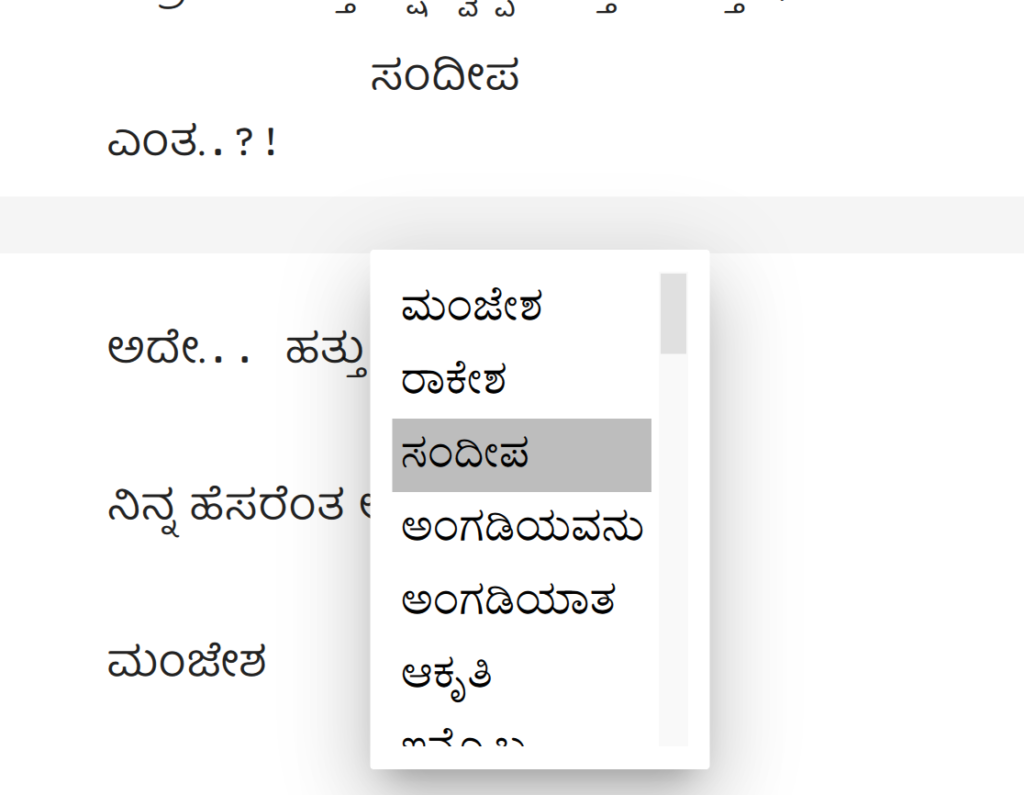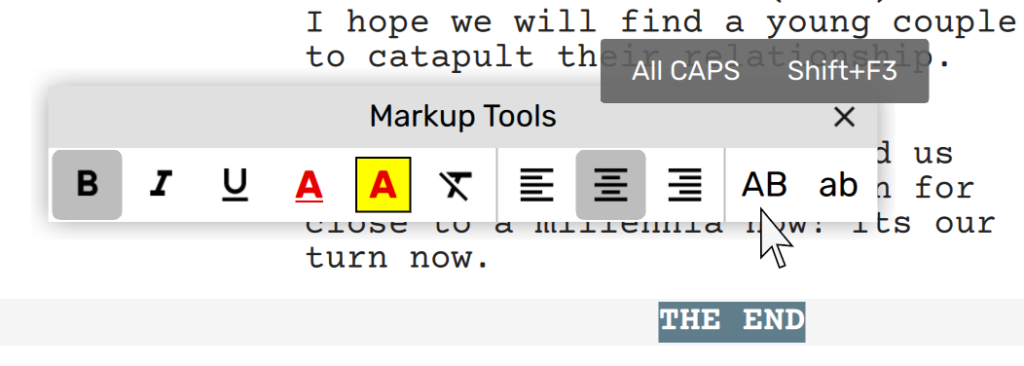Get ready for an exciting new year with the latest update to the 0.9 series! It’s been three months since version 0.9.2 was released, and we’ve added a host of new features and squashed some pesky bugs. Download / Upgrade to version 0.9.3 beta now!
If you have any questions or comments, please reach out to our team and community on Discord.
Table Of Contents
New Features
Scene & Document Word Count
Scrite now displays the word count for the current scene and the entire screenplay in the status bar. This feature allows writers to easily keep track of the length of their work and ensure that it stays within the desired word count range. The word count is updated in real-time as the writer works, providing an up-to-date and accurate representation of the length of the script. This is a useful tool for writers who need to stay within specific word count guidelines or who simply want to track the progress of their writing.

Copy & Paste Multiple Scenes
Scrite now allows writers to copy and paste multiple scenes from the scene list panel from one screenplay to another, or even within the same screenplay. This feature saves time and effort for writers who need to rearrange or duplicate scenes within their script. It is a convenient way to make changes to the structure of the script without having to manually re-enter the text of the scenes.
The copy and paste function can be accessed by right-clicking on the selected scenes in the scene list panel.

It can also be accessed by right-clicking on selected scenes in the timeline panel within the structure tab.

To paste copied scenes, simply right click on another scene and select “Paste After”

File Specific Watermarks
Scrite now saves watermark and other page settings along with the Scrite document. This means that the watermark text and other formatting options will be explicitly saved and included with the document when it is shared. This is a useful feature for writers who want to provide a predetermined default watermark text for use with their Scrite documents.
Users can also create their own default settings for watermarks and other page options, or restore the settings to the factory defaults at any time.

Logline in Title Page
Scrite now allows users to include the logline on the title page when exporting a PDF file. By default, the “Include Logline in Title Page” option is disabled, but it can be enabled just before generating the PDF file.

This feature is useful for writers who want to include a brief summary of their script on the title page of the PDF. However, due to space limitations on the title page, writers should ensure that their loglines are concise and to the point. This will help to ensure that the logline fits on the title page and is easily readable by the reader.

Overall, this is a useful tool for writers who want to include a brief summary of their script on the title page of their PDF.
Logline Word & Letter Limits
Scrite now suggests a 50 word or 240 character limit when the user types a logline either in the Screenplay Editor or within the Notebook.

While writers are able to write beyond these limits, Scrite will mark the excess text in red to alert them that they have exceeded the suggested limits.

It is recommended that writers adhere to these limits to ensure that their loglines are concise and will fit on the title page if they choose to export a PDF with the logline included on the title page.
Automatically Add CONT’D for Character Paragraphs
Scrite is designed to make formatting your screenplay as easy as possible. That’s why it now automatically adds “CONT’D” after character names in the screenplay if the same character is speaking across paragraph or scene boundaries. And when it’s no longer necessary, Scrite removes the “CONT’D” for you. This ensures your screenplay is always properly formatted and easy to read.

You can completely disable this feature in Settings, as explained in the next section.
Auto Capitalize Sentences
Scrite is always working to improve your writing experience. Scrite is constantly working to improve your writing experience, and one of the latest features is the automatic capitalization of the first letter of every sentence, as well as the first letter of known character names. However, if you prefer to disable this feature, you can easily do so in the Settings. This way, you have full control over how your screenplay is formatted and can customize it to your preferences.

Auto Complete Popup now lists Non-English Character Names
We’re excited to announce that we’ve implemented a much-requested feature: non-English character names in the auto-complete popup.

While this feature doesn’t currently filter names based on keystrokes, you can easily scroll and select any name from the popup. To make it even easier to find the character you’re looking for, Scrite lists characters from the current scene first, before listing others.
More Auto Complete Popups
Scrite now shows the autocomplete popup for things like V.O., O.S., and O.C. when they come in brackets after the character name.

The following options are listed in this popup
- V.O.: This stands for “voiceover” and indicates that the character’s dialogue is being heard on the soundtrack, but they are not physically present in the scene.
- O.S.: This stands for “off-screen” and indicates that the character is speaking from outside the frame or from a location that is not visible to the audience.
- O.C.: This stands for “off-camera” and indicates that the character is speaking from a location that is not within the frame of the camera, but they are physically present in the scene.
- CONT’D: This indicates that the character’s dialogue continues from the previous page or shot.
- PHONE: This indicates that the character is speaking on the phone.
- INTO PHONE: This indicates that the character is speaking into a phone or other communication device.
- FILTERED: This indicates that the character’s voice is being filtered or altered in some way.
- SUBTITLED: This indicates that the character’s dialogue is being presented as subtitles on the screen.
- THROUGH TRANSLATOR: This indicates that the character is speaking through a translator or interpreter.
- OVER RADIO: This indicates that the character is speaking over a radio or other communication device.
- ON TV: This indicates that the character is speaking on a television or other video device.
- ON COMPUTER: This indicates that the character is speaking through a computer or other electronic device.
- ON SPEAKERPHONE: This indicates that the character is speaking on a speakerphone or other device that allows multiple people to hear the conversation.
- OVER INTERCOM: This indicates that the character is speaking over an intercom or other public address system.
Save Screenplay Editor Zoom Levels
Scrite can now be configured to remember the zoom level in the Screenplay Editor, both within the Screenplay and Structure tab.

This means that you can set the zoom level once, and Scrite will stick to it even when you switch tabs or launch the app. This new feature is perfect for users who prefer a certain level of zoom when writing their screenplays, and it will save you the time and effort of having to reset the zoom level every time you switch tabs or launch the app.

Comment / Featured Photo Notification Icon
Scrite now includes a notification icon on scene headings when a comment or featured photo is associated with that scene. This feature makes it easy for users to quickly identify which scenes have associated comments or featured photos, and allows them to easily look up that information within the scene.
Hide Empty Title Page & Add Scene Controls
If you find the empty title page or add scene controls distracting, you can now hide them from the Screenplay Editor Options Menu.

Note: Title page is considered empty if your screenplay has no title and subtitle. If a screenplay has a title, then the title page will be shown even if “Show Empty Title Card” option is unchecked.
Note: If “Show Logline Editor” is checked, then the title card is shown by default. This is because the log-line editor is part of the title page area in the Screenplay Editor.
Center and Right Align Action Paragraphs
The ‘Markup Tools’ dock widget now displays alignment tool buttons for aligning select action paragraphs.

NOTE: Custom alignment can only be applied for action paragraphs, because other paragraph types have their own built-in alignments already.
Change Case Option
You can now select a snippet of text and use the ‘Change Case’ tool buttons in the ‘Markup Tools’ dock widget to alter the case of the selected text to ALL CAPS or all small.

Alternatively, you can use keyboard shortcuts
- Shift+F3 to change casing to ALL CAPS
- Ctrl+Shift+F3 to change casing to all small.
Bug Fixes
- Fixed an issue that caused mute characters to not get scanned properly
- Fixed an issue that would cause busy message to show infinitely
- Fixed an issue that would cause Character Report to list mute characters as present in all scenes.
- Fixed an issue that caused auto-complete popup to not filter while typing INT, EXT in scene heading.
- Fixed an issue that would cause MORE and CONT’D markers to be generated in PDF export, even if it is explicitly disabled.
- Fixed an issue that would cause certain characters to get skipped while copy/pasting several paragraphs at once.
- Fixed an issue that would cause English scene headings to get transliterated to another language by mistake.
- Fixed an issue that would case the app to crash while generating a character report, with character notes included while no notes exist for characters in the Notebook.
- Fixed an issue that would cause long subtitles to be included in reports.
- Fixed an issue that would cause character names to remain in auto-complete popup, even after the scenes in which those characters are present are deleted.
- Fixed an issue that would cause 100% zoom to not show on Windows for certain fonts and text-scaling.
- Reworked activation workflow to factor ‘activation code not sent’ case.
- Fixed an issue that caused file version number to not show in window title bar.
- Fixed an issue that caused borders of the table in ‘scene character matrix’ report to look very thick.
- Fixed an issue that caused character name to not go ALL CAPS after typing and changing paragraph format to Character.
- Auto-save now happens in a background thread, thereby freeing up the user to continue working on the Scrite document. Previously, the app would freeze for a bit.
- Fixed an issue that caused duplicate options to show up in ‘Recent Files’ menu.
- Fixed an issue that caused HTML & Final Draft exports to not preserve custom formatting (bold, italics etc).
- Fixed an issue that caused all file names to show .ext as the file name extension in the export and report dialogue boxes.
- Fixed an issue that caused custom formatting to disappear in a paragraph, if it has spelling mistakes.